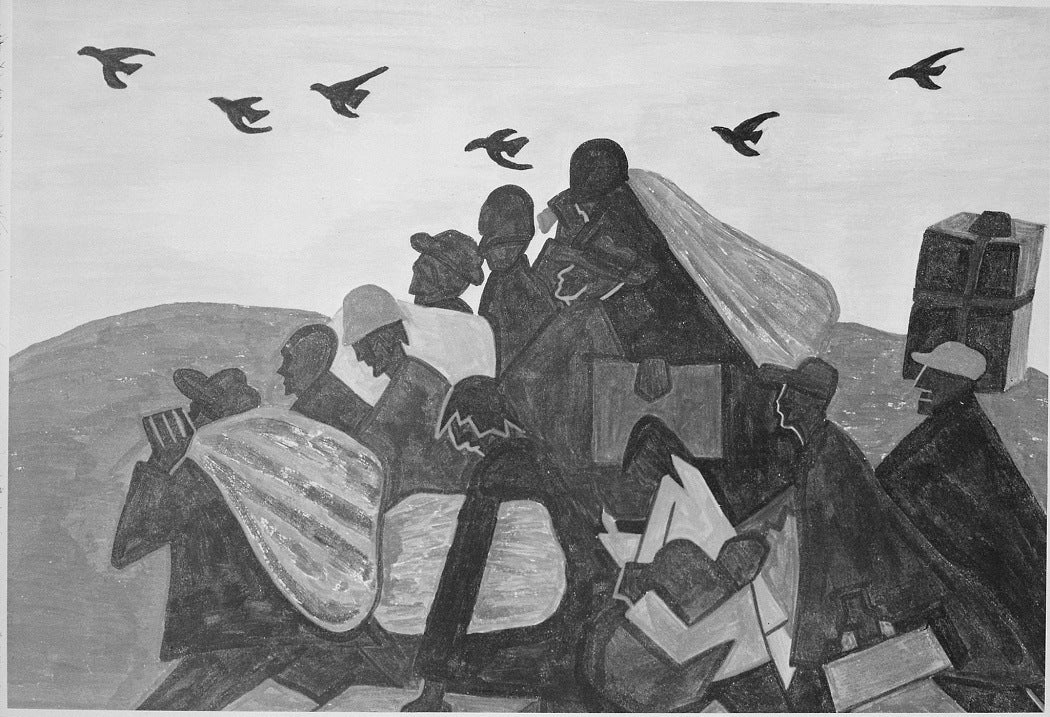Jacob Lawrence’s “Great Migration” series returned to the Museum of Modern Art (MoMA) this spring for the first time since 1995. Described as a modernist and social realist, Lawrence painted this 60-panel series at the young age of just 23, thus launching his lasting career until his death in 2000.
In “The Migration of the Negro,” Lawrence painted 60 panels in 1940-1941 to visually depict the Great Migration (1915-1960) when an estimated six million black southerners leaving the rural South to flee persecution, migrating northeast in search of opportunity, better lives, and protection of the law. Lawrence gave each painting a short caption that served as a verbal cue and title.
In Richard J. Powell’s essay for American Art, he examines the caption for panel 60, And the migrants kept coming, saying: “The title, like the image it designates, is intentionally open-ended, eternal, and playfully suggestive of more to come.” This is true throughout Lawrence’s migration series with captions that offer a narrative hint at the subject he explores so boldly with his paint.
Lou Stovall’s elegy to his dear friend sums up the timelessness of Lawrence’s career simply and succinctly, “Jacob painted his history, yours and mine.”
Stovall describes how Lawrence was able to tap into his own experience and autobiography in order to “tell the story of triumph over adversity.” He recalls:
As a man, [Lawrence’s] life has been the struggle of minority vs. majority, Black vs. White, rich vs. poor. He was outraged by unfairness. Unfairness made him angry, impassioned his art, and focused his attention.
Through adversity, Lawrence was able to voice a shared, relatable history. Powell argues that part of Lawrence’s mass appeal from early in his career had to do with this ability to create beauty from such common narratives:
We’re all more or less from somewhere else; it is often only a matter of distances or stints or degrees of acclimatization to one’s new home that individuates one migrant from another.
Leah Dickerman, the curator of the current Jacob Lawrence show “One-Way Ticket,” also commented on the timeliness of the show as it returns to New York City where it first premiered in full in 1941: “This 23-year old kid was looking at lynching, voter rights, riots in St. Louis of all places, the capricious incarceration of black men…This gives us a sense of the long history of these concerns.”
The lasting influence of Lawrence’s migration panels is inarguable and ever-present. Powell concludes aptly, “Their collective message of motivation, confrontation, negotiation, and imagination…comes down to us like an illuminated twentieth-century ‘Book of Hours,’ a word/image text that provides valuable lessons for all of us acknowledged (and unacknowledged) migrants.”







